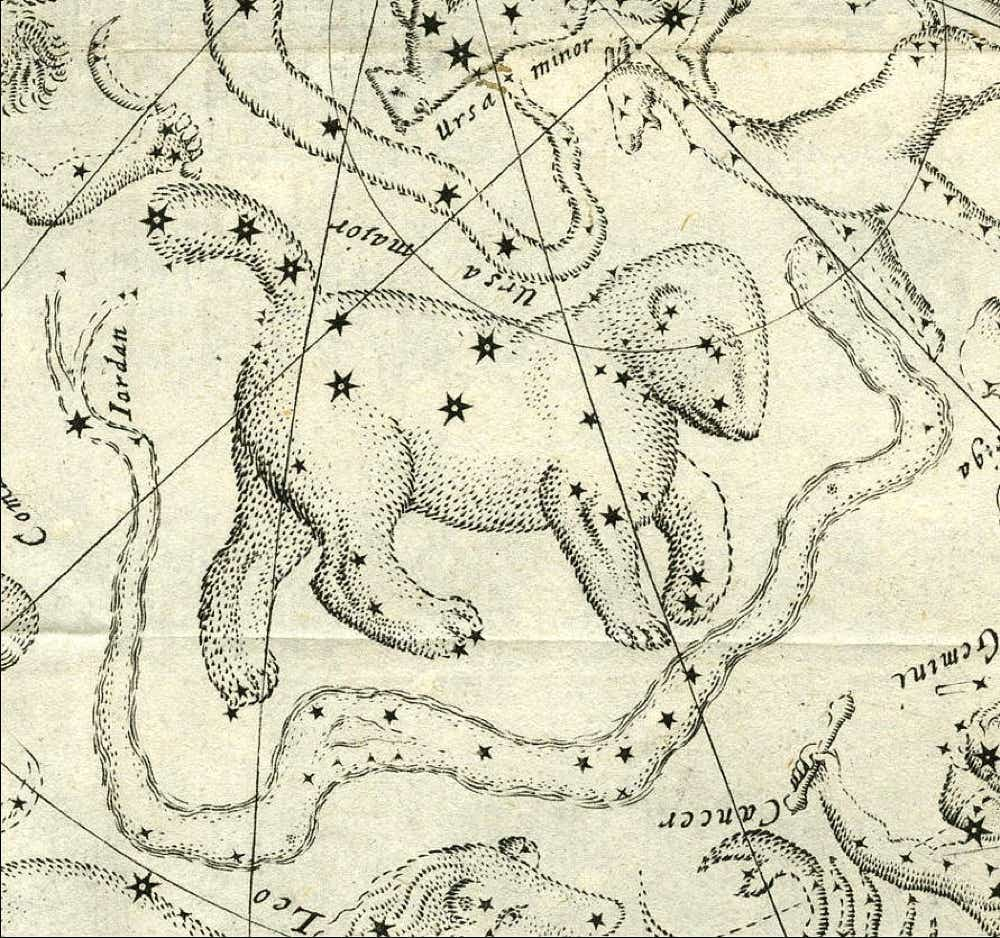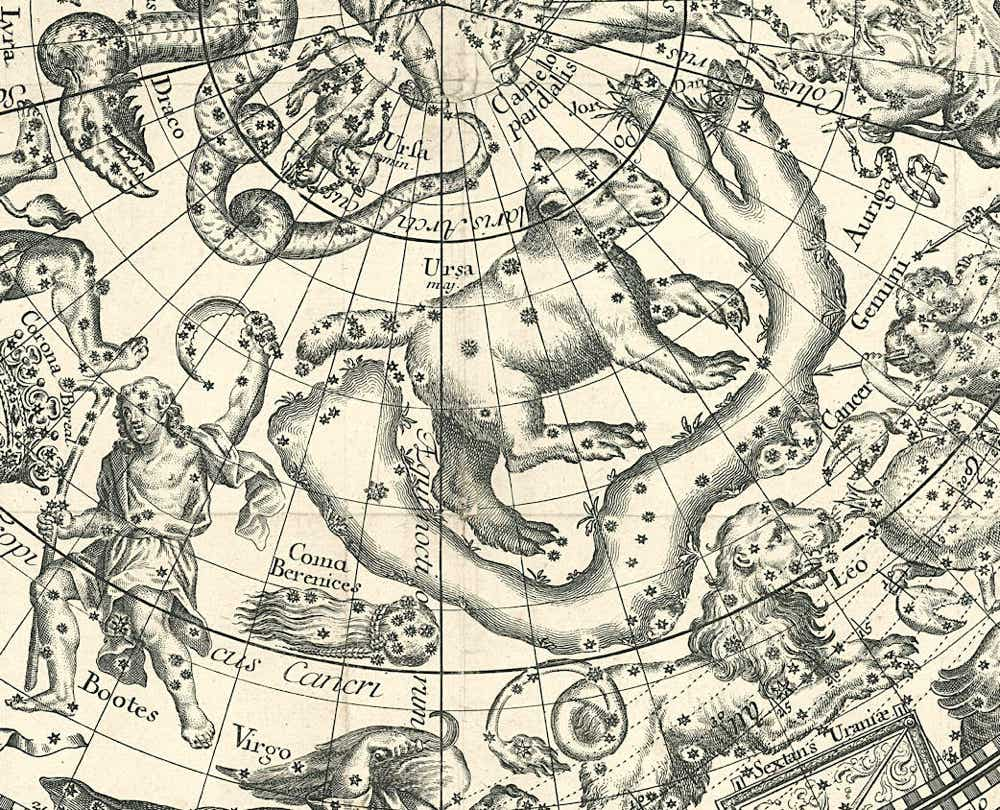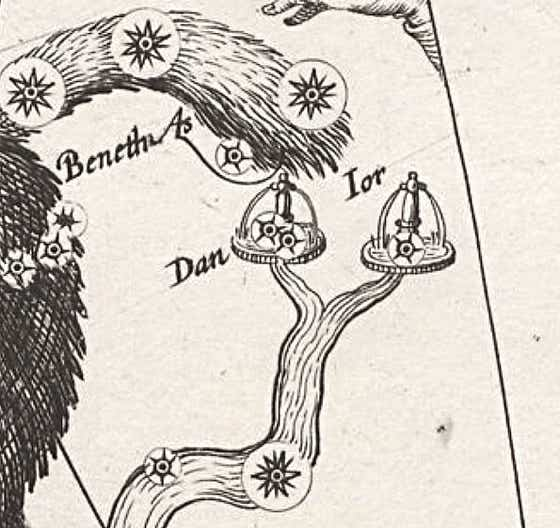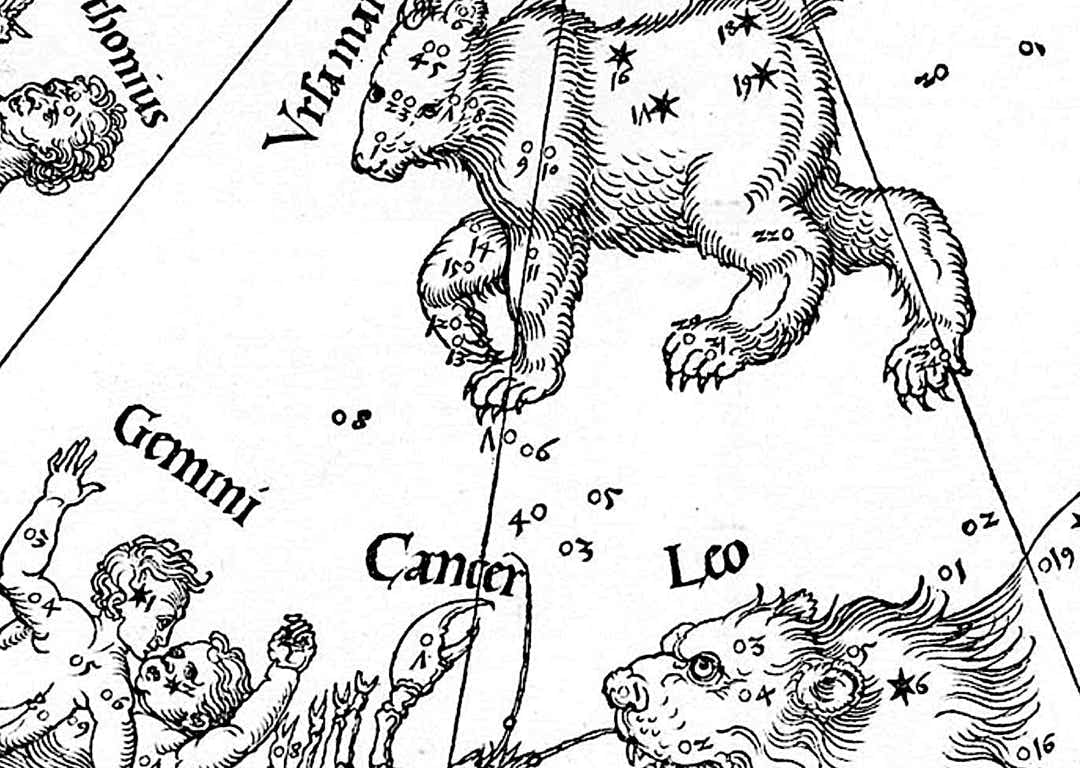
Also known as Jordanus Fluvius or Jordanis, this constellation representing the river Jordan was introduced by the Dutch cartographer Petrus Plancius on his celestial globe of 1612. It incorporated eight ‘unformed’ stars that Ptolemy had listed in the Almagest as lying outside the figure of Ursa Major. These stars are the modern Alpha and Beta Canes Venatici, Alpha, 31, and 38 Lyncis, and three others of uncertain identity (see here). On his globe he depicted the river as flowing from two fountains named Ior and Dan.
The German astronomer Jacob Bartsch first depicted the constellation in print on the charts in his book Usus Astronomicus Planisphaerii Stellati of 1624, as a result of which he was sometimes erroneously credited with its invention. Bartsch explained that the river had two sources, namely Ior and Dan, but not every chart showed it this way, including his own. One that did was by Bartsch’s mentor Isaac Habrecht (1589–1633) in 1628, illustrated below. Habrecht had previously included Jordanus and several other new Plancius constellations on a globe of 1621, from which Bartsch first learned of them.
Jordanus flowing beneath the feet of Ursa Major as shown on a planisphere in the 1666 edition of Isaac Habrecht’s book Planiglobium coeleste et terrestre, originally published in 1628. The bright star at the confluence of the twin headwaters at left is the one we now know as Cor Caroli in Canes Venatici. (Image courtesy ECHO, Berlin.)
Jordanus rose under the tail of the Great Bear in what is now Canes Venatici. From there it flowed between the Bear and Leo (an area now occupied by Hevelius’s subsequent creations Leo Minor and Lynx), ending next to Camelopardalis, another Plancius invention. The German globe maker Johann Ludwig Andreae (1667–1725) reversed the direction of flow on his planisphere of 1724 (below), placing the twin sources next to the head of the Bear.
Jordanus became forgotten during the 18th century once Hevelius had introduced Canes Venatici, Leo Minor, and Lynx in this same area, and it was not shown by Bode.
Johann Ludwig Andreae reversed the direction of flow of Jordanus on his planisphere of 1724, placing its twin headwaters between the head of the Great Bear and Camelopardalis, and its end under the Bear’s tail. (Image courtesy Daniel Crouch Rare Books.)
© Ian Ridpath. All rights reserved
The headwaters of Jordanus were depicted by Plancius as two fountains named Ior and Dan on his 1612 globe made with the Dutch engraver and cartographer Pieter van den Keere (Petrus Kaerius) (1571–c.1646). The fountains lie under the tail of the Great Bear. The bright star beneath the confluence of the streams is the modern Cor Caroli (Alpha Canum Venaticorum). Being on a globe, the constellations are drawn in reverse from the way they appear in the sky.
Eight ‘unformed’ stars catalogued by Ptolemy around Ursa Major that were used by Petrus Plancius to form Jordanus, seen here on Albrecht Dürer’s northern celestial hemisphere chart of 1515. Dürer numbered these stars from 1 to 8, the order in which they were listed in the Almagest. Stars 1 and 2 are under the tail of the bear, at upper right (not the ones above the head of Leo); these were later the basis of Johannes Hevelius’s new constellation Canes Venatici. Dürer’s chart shows the constellations back to front, as they would appear on a celestial globe.
Jacob Bartsch explained that Jordanus had two sources, Ior and Dan, in his book Usus Astronomicus Planisphaerii Stellati of 1624.







